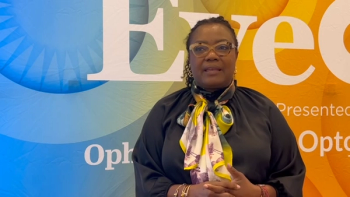
- Ophthalmology Times: January 2020
- Volume 45
- Issue 1
Overcoming common hurdles when branded drugs are what physicians ordered
It is imperative for physicians to ensure that patients are receiving the correct medications that they prescribe, and not a generic brand that may not meet the objectives.
By Houman Vosoghi, MD
As physicians, we usually want to prescribe what’s best for our patients. Sometimes that means specifying a branded glaucoma drop rather than a generic. Perhaps a patient needs the predictability of branded latanoprost (Xalatan,
Or maybe a patient who has been using a generic drop has ocular surface irritation, and I want to prescribe a preservative-free brand-name formulation. It used to be that physicians could prescribe any medication they felt was necessary for patients and the patient would be able to get the same medication without much hassle.
Those days are unfortunately in the past. In prescribing a brand-name medication over a generic in the current insurance market, my staff and I often need to scale three or four obstacles, but I think it is still worth it to do what is best for my patients.
Here are some pearls for facing those obstacles, based on experience.
Succeeding with insurers
When I prescribe a branded glaucoma drop, insurance companies frequently tell us it is a non-preferred or non-formulary medication, and they do not cover it, trying to prompt a switch. With so many different plans and sub-plans, it is hard for us to know what will be covered for a specific patient in advance. When a medication is not covered, one strategy is to seek prior authorization.
My staff goes through that process, which entails an approval period and sometimes even an appeals process if prior authorization is not granted. To bridge the gap, we usually give patients a sample.
Delays in approval or appeals usually do not outlast the sample. We sometimes have to allow the patient to use a generic, prove that the patient is not tolerating it or that it is not as efficacious as the brand name, and then get prior authorization based on that evidence. It also helps to be familiar with peer-reviewed published studies we can provide to the insurance companies demonstrating better efficacy or tolerability for our preferred branded medication.
The battle puts a burden on the doctor, requires staff hours, increases the number of patient visits, and prolongs the desiredgoal of treatment – but it is our ethical duty to get patients the best individualized treatment for this chronic, progressive disease.
Selecting a Pharmacy
Pharmacies represent another complex challenge.
Some pharmacists feel, even if the prescription states “dispense as written,” that they are free to substitute a generic. Occasionally, pharmacists also speak directly to patients about accepting a cheaper generic option, implying that the medication works just as well or is equivalent when that might not be true. In a recent development, when I prescribe a medication that has no generic equivalent, the patient’s pharmacy plan recommends a switch to a different class of drug instead of the one I have chosen. This is particularly annoying because I usually choose medication classes specifically to avoid certain side effects or contraindications. Some of these barriers require the same kind of staff work and appeals as insurance approval.
Others can be solved or prevented by connecting patients with a local pharmacy that respects doctors’ preferences. I speak directly with two local, private pharmacies about which brands I prefer and why, and then I explain the same information to patients and let them know that those pharmacies help me fight for them to get the medications that are best for their specific situation.
These pharmacies in turn assist the patient and my staff to get my preferred medication approved at the lowest cost to the patient possible.
Keeping Costs Down
When we get approval for a branded medication, some insurance companies add the caveat that it is a “higher tier” medication, which will cost patients more out of pocket. However, most drug companies offer discount programs and rebates for patients with commercial insurance. It is important for physicians to know about these programs and to have staff educate commercial insurance patients to use these programs to minimize their costs. Patients are a lot more likely to be compliant when they can afford to buy their medications.
Partnering with Patients
In every aspect of this process, my patients and I need to be on the same page. That simply means educating them about why I want them using certain medications. When I want a patient to use a brand-name medication, I explain the reasons. “If it is not covered, give me a call and we will take other steps. Please do not just tell the pharmacist, ‘Sure, give the generic.’”
For example, when I prescribe an alpha agonist, I tell my patient that I prefer the brand name brimonidine tartrate 0.1% (Alphagan P,
If is not covered, patients should call me and keep using their sample. We have to make our patients more informed and better prepared for what they encounter at the pharmacy and help them become their own advocate.
Delivering the Best Care
Fighting for a brand-name glaucoma drug when appropriate is the ethical thing to do for our patients. There are logistical difficulties and a financial burden to the clinic, but do not give up and prescribe generics that you do not believe are in your patient’s best interest. When you understand the differences between each of the branded and generic medications for glaucoma based on the published science and personal clinical experience, you can determine the classes of medications and the situations in which you prefer a brand name.
And once you have your preferences, try to fight and be an advocate for your patients despite the investment of clinic staff time and resources. The entities throwing obstacles in our path want us to get frustrated and give up, but we need to continue to be advocates for our patients.
Disclosures:
Houman Vosoghi, MD
E: [email protected]
Dr. Vosoghi is a glaucoma specialist at Dougherty Laser Vision, Los Angeles. Dr. Vosoghi is a paid speaker for Allergan and Aeri.
Articles in this issue
almost 6 years ago
Doing justice to corneal irregularitiesNewsletter
Don’t miss out—get Ophthalmology Times updates on the latest clinical advancements and expert interviews, straight to your inbox.



















































.png)


